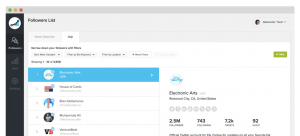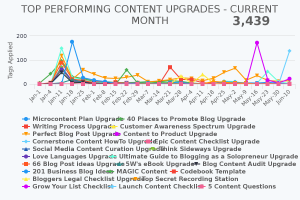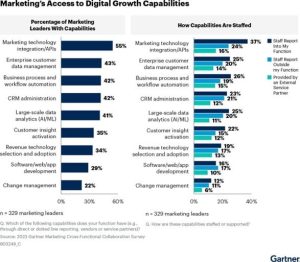— March 6, 2019
Crowdfunding is the process of collecting funds through a holistic approach of numerous participants. It is usually in the form of a mass level collection of funds through donors and investors or both. The funds collected are used to support the efforts of, primarily, businesses, who started the process. Today, this funding is done for a wide variety of purposes, with charity being the most notable.
The motivation behind crowdfunding participation comes from the donor’s feeling that he or she is equally responsible for the success of the business. Crowdfunding is a viable option for many starting businesses because they can use their stakeholders to give feedback and promote the business within their circles for free. Crowdfunding is powerful because businesses have a platform to showcase their talent, where they can be easily seen.
Crowdfunding Basics
Crowdfunding is a simple process involving donors and or investors. Businesses seek funding and, in return, provide their backers with services, products, equity or nothing. It depends on the kind of campaign being conducted. Some campaigns are involved around providing equity for funding and others may be rewards based. We’ll get into campaigns a little further down in the article.
To further illustrate how crowdfunding works, an example of crowdfunding could be selling t-shirts in order to benefit a charity. In this example, the sellers and buyers are both contributing funds with the proceeds going to the Charity: the seller pays for the cost of the materials and labor in order to make the t-shirts and the buyer purchases the t-shirt.
The Age of Online Crowdfunding
Thanks to the internet, the phenomenon of crowdfunded investing is becoming enormously popular these days. Previously used methods of fundraising are now becoming more and more obsolete.
Crowdfunding is gaining mass attention because it’s easy and cost effective. Campaigns ask for smaller amounts of contribution by each individual, making investing in your business a more viable option. Because it is a collective approach on a mass level, the cost of advertising and marketing is also automatically reduced.
Social media such as Twitter and Facebook are of great help in promoting crowdfunded campaigns. Top crowdfunding sites include:
- Kickstarter
- Indiegogo
- GoFundMe
- Fundly
- Rocket Hub
The best attribute about crowdfunding is it is based on the open market where savvy supporters are looking for high-end, potentially innovative, and promising ventures to put their money into.
Here are some other potential benefits of crowdfunding:
Pre-Launch Crowdfunding
Crowdfunding is a great opportunity to explore ways to raise capital before you even start your business. Whether your cause is for disaster relief, a salable product, launching a start-up, or a creative project, funds are easy to raise, as long as potential investors are interested in the idea. Crowdfunding can also be used for business expansion.
Viral Marketing
Crowdfunding helps in marketing a product while funds are still being raised. By generating interest and awareness, it helps a business reach wider audiences who carry forward the idea within their network for generating even more attention.
What it means is much of the marketing is done while the product is still raising money itself.
Listen to Crowd Feedback
When the idea reaches targeted investors, and they express interest in it, they are able to provide important feedback for product-market fit. Increased feedback frequency pinpoints weak design areas and improves the product or service before launch.
Crowdfunding Can Change the World
Another benefit of crowdfunding is that it opens up room for innovation. When an idea is publicly accessible, it creates a good fan base.
What was earlier known to only a handful of people is now known to thousands, or even millions, of people worldwide. Thus, crowdfunding makes not only products and services more innovative and democratic, but it encourages everyone to think outside of the box for creating better projects the world needs.
Today, crowdfunding is being used by people around the world for funding various activities from business, education, conservation, and more.
Flavors of Crowdfunding
Donation-based Crowdfunding
Believe it or not, there are campaigns for raising capital that are purely donation-based. In these campaigns, there is no expected return for investments. However, you will find campaigns that succeed are for worthy causes or ones people can proudly stand behind such as nonprofit, charity, and critical aid campaigns.
Rewards-based Crowdfunding
In reward-based campaigns, a business’ crowdfunding strategy is centered around providing its contributors with rewards in exchange for their capital. The reward could be in the form of a product or service your company is working towards creating. After securing your funding goal, your business establishes a promised completion date for the reward to be issued to contributors.
Reward-based crowdfunding campaigns are popular options because they incentivize investors with a form of compensation without having to give up a portion of their company’s equity.
Common rewards are promises of between 3 to 8 items that are combinations of pre-orders, completed services, and swag.
Equity-based Crowdfunding
Equity-base crowdfunding is a type of investment where a contributor gives your business money in exchange for a percentage of your company’s stake. They expect to trade their capital for equity shares, becoming part-owners in the process. The expectations don’t end there; they are also looking to receive financial return on their investment.
Once they become shareholders, financial returns will typically be issued to them quarterly through dividends.
Equity-based crowdfunding closely resembles VC, with the caveat being: there’s multiple investors with less direct control.
Debt-based Crowdfunding
Just as equity-based crowdfunding resembles VC models, debt-based crowdfunding equally mirrors traditional loan structures.
Having selected this campaign type, you are beholden to lenders. Take note, contributors to these campaigns are not backers or investors but lenders. They are providing your business with a loan, not in exchange for equity, with the expectation you will pay back the principle and interest.
Instead of borrowing from a bank, which may grant you a large, single loan, you are borrowing from a collective of individuals, or peers, for smaller sums per individual. Peer to peer (P2P) loans are less rigorous and easier to secure because your business is far more likely to qualify for smaller loans.
Crowdfunding Best Practices
You have secured funding and are in the midst of preparing your product or service. You promised a 6 month completion date from the onset and are now 2 weeks into your campaign. It’s time to update your backers with information concerning your campaign.
Inform your contributors of both good and bad news. You should plan to report your successes before they happen. Anticipate small goal completion dates and celebrate them with your following as you progress. This can help your campaign attract more contributors even after you reached your fundraising goals. Staying in touch with investors about successes will help them to justify their decision to fund you and, possibly, endorse you further. In order to make the best use of crowdfunding, you need to be realistic.
Keeping the communication transparent in poor situations will help you to navigate hardships you experience. It’s always better to come out with any negative information ahead of the curve than later. If you run into any issues, report them calmly and request your backers for further assistance. Chances are, they will come to your aid if they believe in your company. You may disgruntle a few, but most will recognize setbacks happen in business.
Incorporate feedback loops from investors. Listening to your audience is invaluable to you. Investors may understand an aspect of your company’s product or service you haven’t yet considered. Interspersing feedback loops into your campaign will allow you to tailor and change small aspects of your product or service that can potentially help you to resolve the needs of an under served market.
Lastly, begin promoting your campaign even before it launches. You want to build excitement around your social media accounts leading to your campaign page. Reach out to influencers and turn them into your champions. This is how you will drive some outside investors to your campaign page.
Once you begin your campaign, update your Facebook Page with consistent content like milestones, social proof, and educational and informative posts to build an engaged following.
Top 3 Crowdfunding Campaigns
There are 3 main campaign categories you should be aware of:
All or nothing
All-or-nothing campaigns are the kinds of campaigns where either your business meets its fundraising goal and keeps its funds, or it doesn’t and relinquishes them.
Be realistic about what you can raise. Even though these campaigns have a higher goal meet success rate, requesting too high a contribution limit will hamper your fundraising results.
Keep it all
Keep-it-all campaigns are where your company will retain all funds invested even if your business doesn’t meet its fundraising goal.
Just Giving
Just giving campaigns have no time limit for you to reach your fundraising goal. They exist in perpetuity and outside entities can fund raise on your behalf.
How Crowdfunding Changes the Game
Traditionally, businesses sought investment from those with excessive amounts of money. In the past, they typically limited their outreach to the wealthy. Small businesses would create a business plan, product prototypes, and financial forecasts, and present their materials to a small community of wealthy institutions such as banks, venture capitalist firms (VCs), and government for potential investment.
Today, with crowdfunding, traditional investors are being displaced by average citizens. All a small business has to do is sign up on a crowdfunding platform, share their story, and seek investment from a collection of individuals. This model underpins its success by having collective investors offset the wealth of a single institutional investor.
Crowdfunding also puts your business before potential investors in a quicker time frame. It can take months, even years, to secure funding from VCs; therefore, opting to use a crowdfunding platform could present your small business with quicker capital you can use to grow your business when its most crucial.
Crowdfunding or Angel Investing
Deciding between whether your business should pursue crowdfunding or angel investing can be a hard decision. You have to weigh the benefits and disadvantages of each option and select what your business needs most. Here are some common traits of both crowdfunding and angel investing:
Crowdfunding
In crowdfunding campaigns, there exist different types of campaign structures, presenting businesses with more fundraising options. The primary difference between a crowdfunding campaign and an angel investment, however, is crowdfunding isn’t solely about exchanging your company’s equity for funds, where angel investing is.
When you enter a crowdfunding platform, you can create a pitch and never have to do it again. It will exist on the platform for many potential investors to see. The benefit here is simply the reduced amount of time and effort you have to put into crafting your message for individual investors. Before crowdfunding, there was no, “one-size-fits-all,” approach to pitching for investors; now there is.
An extended benefit of having your company’s pitch directly searchable online is the increased visibility it will receive. If it’s a good pitch that resonates with its targets, it will build traction and mention of it will spread quickly. This can help to further extend your company’s visibility and set you up for future funding round success.
We’ve spoke about many of the benefits, but there are also disadvantages to crowdfunding. They tend to raise less capital for campaigns on average than an angel investors can provide.
Crowdfunding campaigns also incur fees. These platforms make money by charging your business fees to advertise their fundraising campaigns. Take this into consideration when planning your fundraising initiatives.
Angel Investing
Angel investors are accredited investors who either have at least a net worth of $ 1 million or earn upwards of $ 200,000 in income a year. These individuals have no restrictions or limits to the amount of money they can invest into businesses with. Depending on your outlook, angel investors can either help or hurt your business.
The wonderful thing about angel investors is they invest in your company without the expectation to be repaid. They have bought into your company with their money and are now looking to help make your business a success. By increasing your company’s value over time, they recoup their investment.
However wonderful they are for providing your business with funding, they will, more likely than not, take a leadership role within your company, either it be a seat on the board or more actively guiding your business. A hands on angel investor isn’t a bad thing, though. They can provide you with sage guidance in traversing the hardships of scaling your business.
Giving them control of your business in any capacity is something you should give serious thought to. If you are uncomfortable shifting the focus of your business, in any way, angel investment may not be for you; although, if you’re comfortable taking advice and pivoting your business, if need be, this option is right up your alley.
Conclusion
Now that you know your options, consider trying crowdfunding for your upcoming fundraising campaign. You’ll need to be just as diligent crowdfunding as you would be pursuing other backers, so do your research, be transparent and change the world.
Business & Finance Articles on Business 2 Community
(89)










